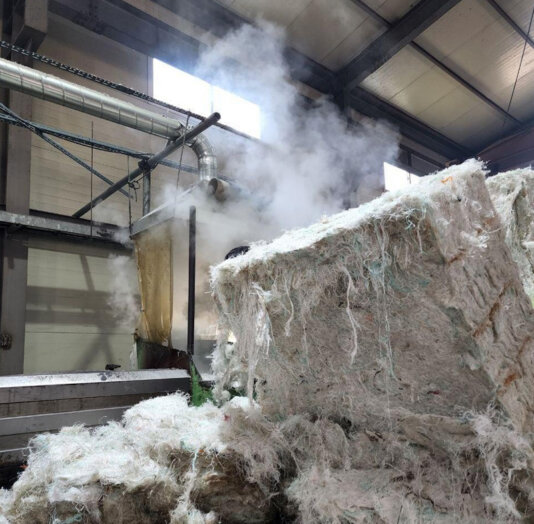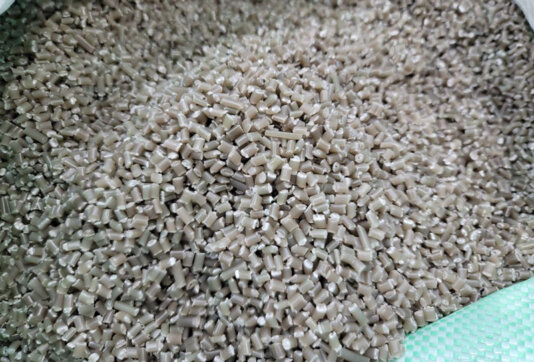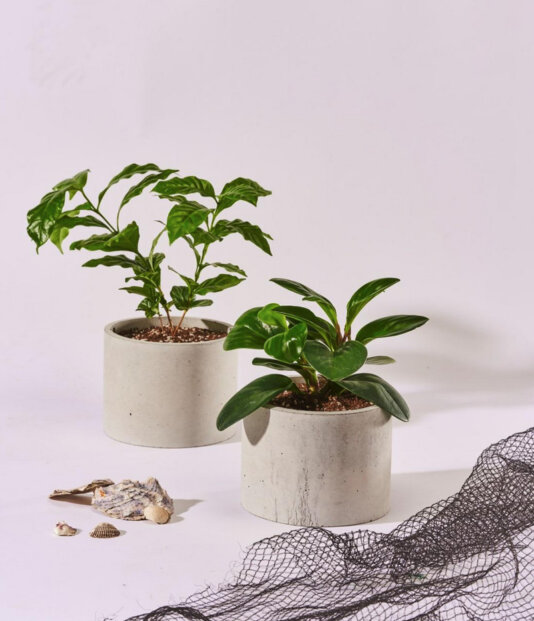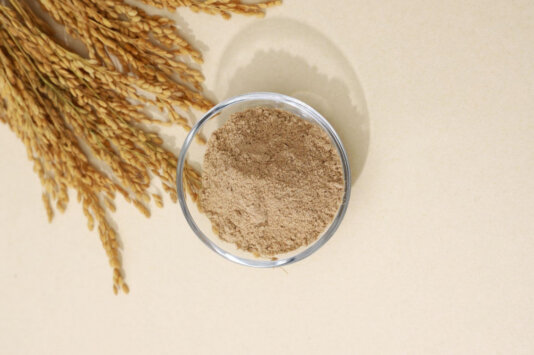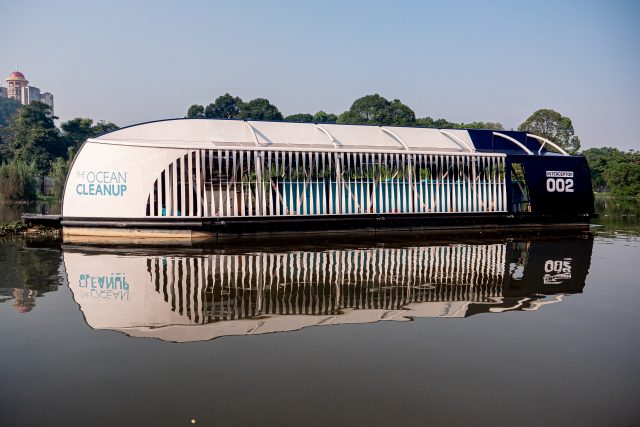- About
- Topics
- Picks
- Audio
- Story
- In-Depth
- Opinion
- News
- Donate
-
Signup for our newsletterOur Editors' Best Picks.Send
Read, Debate: Engage.
| June 12, 2022 | |
|---|---|
| topic: | Innovation |
| tags: | #South Korea, #waste, #technology, #food waste, #ocean pollution, #upcycling |
| located: | Korea, South |
| by: | Hailey Jo |
‘Domoji’ was one of the most horrific methods of execution used in the Joseon dynasty, the last kingdom of Korea, where pieces of wet paper were placed on the face of the accused, fastened with ropes, one layer after another, resulting in a slow painful death from suffocation.
"Plastic is like Domoji to the sea," said Jonghwa Won, founder and CEO of Foresys, a South Korean ocean waste solutions startup, and offshore infrastructure engineer.
"We use plastic for obvious reasons: It’s flexible. It doesn’t leak. It’s a great insulator and it's affordable. But now plastic wastes are clogging up our oceans. Some say they will eventually settle on the seabed and form a stratigraphic layer of plastics. When and if that happens, survival will become a daunting challenge for all living things above that layer."
Figures are telling. In South Korea, nearly 140,000 tonnes of ocean waste was collected in 2020, according to the country’s Ministry of Oceans and Fisheries. That’s about 7,000 garbage truck loads of waste, while the actual volume of marine waste remains unknown. Of that, some 13.2 percent was deep-sea debris with the rest found near the ocean surface and on shore.
Once marine litter starts to sink into the deep sea, it becomes increasingly costly and difficult to locate and remove. Broken down pollutants, such as plastic particles, are ingested by marine species and ultimately by humans who sit on the top of the ocean food chain.
That is part of the reason why Foresys focuses on intercepting wastes before they reach the oceans - in early stages of the waste life cycle.
The waste-to-value enterprise aims to develop a full cycle of marine waste management processes. Here’s how it works: A line-shaped floating device called ‘Floating Barrier’ is installed in waterways where there tends to be large accumulations of waste, capturing all sorts of debris, including discarded fishing nets, urban and industrial wastes as well as mass buildups of debris from natural disasters.
The device is anchored to the bottom of the river to stay in position, with one end fixed to the bank so as not to be swept away by currents. The size of the device is optimised to minimise its environmental impact. Captured wastes are automatically moved to a small trash bin attached to the fixed end of the barrier, which is fitted with transmitters and sensors that send alerts to Foresys when the trash bin is full.
The Floating Barriers are currently deployed in the lower and upper sections of the Suyoung River in the southern port city of Busan, and are expected to be installed in the Geum River in Chungnam Province, whose provincial government is keen on marine protection following accidental oil tanker spills in its seas. The floating barrier solution will also be exported to Indonesia towards the end of this year.
But the collecting part only addresses a portion of the marine waste problem. In South Korea, marine wastes have to be desalinated before being sent to be burned or buried to prevent the generation of poisonous chlorine gas and dioxin and corrosion of waste handling equipment, Won of Foresys said. "Landfill and combustion facility operators won’t take marine waste if it’s not thermal-treated. But who would do it? It's a waste. It has no value. The reality is that much of the collected marine waste is illegally disposed of."
At Foresys, the AI-powered image processing platform, AMEIS, scans and analyses the gathered rubbish. Plastic materials such as Polypropylene (PP), Polyethylene (PE) and Polyethylene Terephthalate (PET) are sorted for upcycling and go through an ultrasonic pre-treatment process before being upcycled into high-quality plastic pallets.
These tiny pallets are used as raw materials to make battery packs for electric vehicles by major Korean automakers and loading pallets used by logistics companies, which are often made from solid wood and plastic. Using upcycled materials helps businesses hit their carbon emissions reduction targets.
Discarded fishing nets are upcycled into filaments for 3D printing. 3D-printed fibres will replace steel bars (also known as rebars) reinforcing concrete, reducing its carbon footprint and solving 3D concrete’s non-compatibility issues with steel reinforcement. Oyster shells, which are often dumped in vast quantities in South Korea - the world’s second-largest oyster producer - are also upcycled and go into the 3D concrete.
Currently, Foresys is raising KRW 4 billion in Series A funding to acquire a waste management facility and obtain a waste management permit. This will enable the startup to proactively engage in all stages of the ocean waste cycle - from marine debris collection to treatment to pallet production - without being caught up in a web of rules and regulations or facing outrage from established players in the sector for whom more garbage is a boon.
Last March, some waste management facility operators made a complaint when Foresys collected 3 tons of discarded maritime ropes from the Western Regional Coast Guard without charge. "For them, it was an opportunity to make money," Won told FairPlanet. "Even if we have technologies to collect and upcycle ocean waste, we can’t get the permit if we do not have a waste treatment plant. The only way for us to overcome that regulatory hurdle is to purchase a facility."
Won stressed that oceans hold the key to tackling climate change. "The oceans are a lot bigger than the land area. Underwater forests are much larger than forests on land. The oceans produce more oxygen than trees." He added, however, that those underwater forests are disappearing. "If you look at liquefied gas, an incredible amount of gas condenses to a liquid under high pressure. In the ocean, the pressure gets hundreds times greater than the pressure at the surface, which means the oceans can absorb and reserve a great amount of greenhouse gases. Typhoons, winds and even melting glaciers at the poles help the oceans redistribute heat and maintain a temperature balance. But today, the balancing act is failing and it’s largely on us."
The sheer scale of marine pollution could overwhelm people and make them feel that individuals alone cannot solve this problem. However, Won suggests thinking about the sources of the waste as a possible path forward. A majority of marine debris entering the ocean originate on land and come from people. "When walking in downtown Seoul, I see a lot of cigarette butts tossed out into the sewers. Think the ocean starts right there - from the sewers in your neighbourhood and your drains. That’s what people can do in their daily lives."
There are other loops to close to effectively mitigate climate change, with one of the areas being the food supply chain.
Amid shifting public perceptions towards and against upcycled food products, the upcycled food market is burgeoning in South Korea - showing substantial promise of growth.
The food and beverage industry has been coming under increased pressure to mitigate its carbon footprint in recent years. A 2019 Intergovernmental Panel on Climate Change report estimates the global food system is responsible for roughly a third of global GHG emissions.
In essence, upcycled food products are made from by-products generated in making certain foods, such as spent grains and leftover malt from beer brewing. It is estimated that Korean food manufactures altogether pay tens of millions of dollars in environmental charges every year to discard the by-products from their food manufacturing processes.
At the forefront of the efforts to divert food by-products from landfills and market the unmarketable is Re:harvest, a Seoul-based food upcycling startup founded in 2019 by CEO Alex Min. "There was no market for it. People didn't care. People just didn't know about this issue and they never thought about solving it," Min told FairPlanet. "Now that we did it, more companies are jumping in."
The former management consultant said he was a first-hand witness to the gap in the global food system. "One day, I ended up in Rwanda in Africa. I was walking around street corners and I saw people hungry, starving. They didn't have any food to purchase even with money. The next day, I had a chance to fly to France. It was a three-Michelin starred restaurant and I was having a fantastic time. And in the course of all this, [the chef] said, 'We have a lot of byproducts that come out from cooking and it is one of the difficulties of running a restaurant'. At that moment, I realised that we had an issue with the food ecosystem," Min recounted.
"I wanted to do some kind of business to close the loop," he went on, " and I figured out Korea would be the best place to do it, where we import 70 percent of raw food ingredients and throw away roughly 600 kilograms of food byproducts per person annually."
After nearly 150 rounds of testing, using some 240 tonnes of food byproducts, Min and his team of researchers managed to engineer an entire process and specifications for necessary equipment to repurpose beer byproducts - essentially, leftover boiled barley - into a nutritious raw food ingredient called Re:nergy Flour, which has at least twice the protein and 20 times the fibre of all-purpose flour and is lower in carbohydrates and calories.
Re:nergy Flour is subsequently sold to restaurants and food companies where it is used to make a variety of foods, such as pizza dough, fried chicken batter, pastas, bread, noodles and tonkatsu mix.
In addition, the startup further processes Re:nergy Flour into marketable products such as Re:nergy Bar and Re:nergy Shake. As the demand for sustainable, alternative foods continues to rise, Re:harvest’s B2C sales have tripled between 2021 and 2022.
Re:harvest currently upcycles byproducts of making beer, tofu, cold pressed green juices and sikhye, a traditional sweet Korean rice beverage mainly made from rice. "Essentially, Sikhye and beer byproducts are actually the same, because the way we make Sikhye and beer are almost the same," said Min. "Once you boil the barley, you squeeze out sugar content and carbs, it’s called barley water. And then you add yeast and ferment it, it becomes beer. If you add rice and ferment it, it becomes Sikhye. So at the end of the day, what you get as a byproduct from beer and Sikhye are the same thing."
There was another reason why Re:harvest turned to upcycling Sikhye byproducts first. Unlike other food waste normally overseen by the Ministry of Environment alone, the handling of beer spent grains involves the Ministry of Food and Drug Safety as well as the National Tax Service, due to the country’s Liquor Tax Act, according to Min.
After a yearlong discussion with the relevant authorities and through a "regulatory sandbox" that grants exemptions of certain regulations that block startups from launching new types of businesses, Min finally paved the way to tapping into byproducts of the alcohol industry. Re:harvest is now eyeing soju, makgeolli, coffee, yogurt, sesame, barley oil and even animal-based byproducts with much bigger carbon footprints.
"We are partnering up with CJ CheilJedang to introduce a lot of upcycled food products. Lotte, SPC, Samyang and other players are also coming into the market. So I think Korea’s upcycled food industry is going to grow really fast."
Despite this promising development, Min said, there is a loophole in our food systems that cannot be plugged: our taste buds.
"Before industrialisation, when we got an apple, we just ate it as a whole. Now, we take out the carbs and sugar content and make apple juice out of it. Whatever is left over becomes food waste. As our taste buds get more complicated, we're craving for something more unique, more tasty and find ways to extract something tasty out of raw food ingredients. Food waste is only going to increase, so we have to figure out a way to close the loop."
The concept of a net carbon loss offers a clue. Last year alone, the startup upcycled some 1,500 tonnes of used grains. For each kilogram of Re:nergy Flour produced, about three kilograms of beer spent grains were upcycled - offsetting the carbon and water usage that would have been generated if they had been discarded as food waste.
This means that, when it comes to upcycling: the more is truly the better and greener. Re:harvest expects to see rapid growth in its upcycling volume this year. Its first commercial-scale food upcycling facility will open in Hwaseong, Gyeonggi Province this coming August.
Image by Re:harvest.
By copying the embed code below, you agree to adhere to our republishing guidelines.

